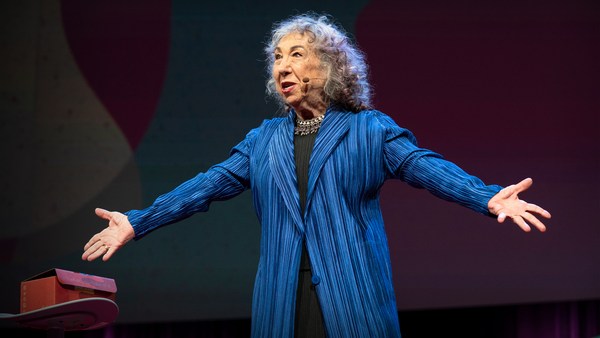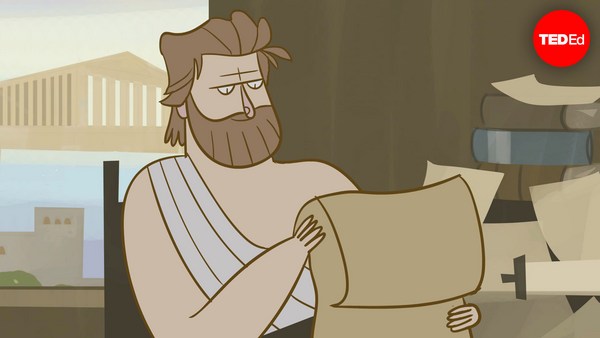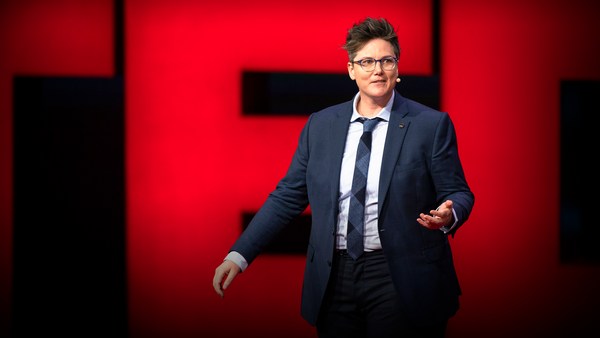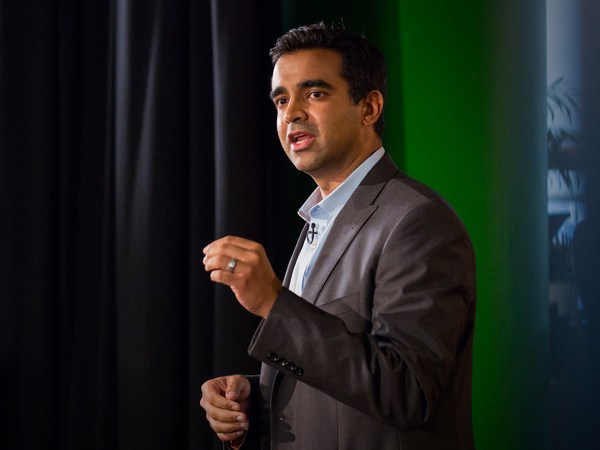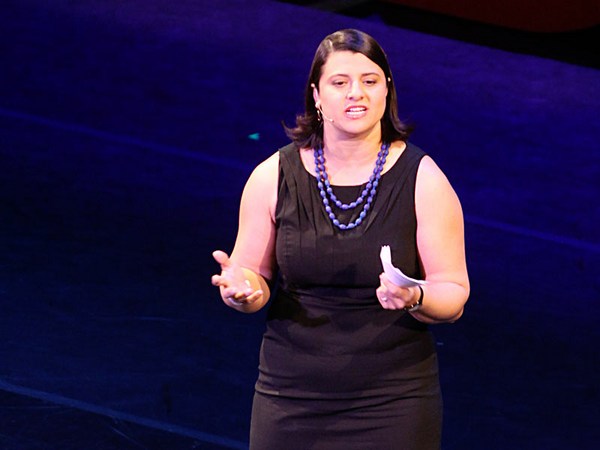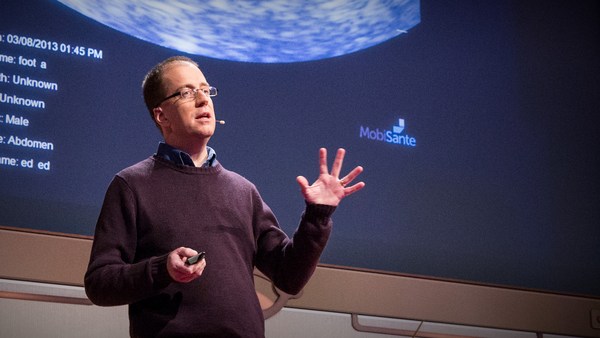I danced with Bella for the first time as Bei Mir Bistu Shein filled the room. And her blue eyes locked with mine. We took turns singing and forgetting the words. She led, I followed. A waltz step here, a shimmy here.
(Rattle sound)
(Laughter)
Hands on our hearts, our foreheads touching, as we communicated through movement and music, making sense through nonsense.
Bella is 83 and lives with dementia. The dance gives us a chance to find each other. How did I learn to dance with dementia? Because I'm not a dancer. And I'm not a doctor. But I've played one in the hospital.
(Laughs)
I'm a clown doctor. Or a medical clown. My tools are whoopee cushions, shakers
(Shaker rattles)
and a red nose.
You know the old adage "laughter is the best medicine?" I hear that a lot. Now, at the same time, there are studies to support it, but right now, I'd like to take you behind the nose and go beyond the laughter and share a few things that I've seen skating through ICUs. In my Heelys. Size 11. Because I take medical clowning very, very seriously.
(Deflating sound)
(Laughter)
(Deflating sound)
(Deflating sound)
(Laughter)
My mentor was conducting clown rounds in the hospital when he was approached by a nurse. They needed to put a tube up the kid's nose. Kid didn't want to do it, so rather than hold the kid down, they asked my colleague if he could help. So the clown asked for a second tube and shoved it up his own nose. Kid of like this. Oh, please don't do this at home.
(Laughter)
Now, the kid saw this, grabbed his own tube and promptly stuck it up his own nose, kind of like this.
(Applause)
The clowns, the nurse and the patient discovered a creative solution for their situation together. And guess what, there's research to back this up. Randomized controlled trials in Israel and Italy show that medical clowns can be as effective as tranquilizers with no side effects.
In 2004, I started conducting my own clown rounds at the Memorial Sloan Kettering Cancer Center in New York City. My colleague and I were invited to accompany a young six-year-old with the most adorable southern accent, to accompany him while he got his chemotherapy port flushed, a very uncomfortable and regular procedure. We joined him, his mom and the nurse in this tiny, closed curtain cubicle. Every medical clown encounter begins by obtaining consent from the patient. So we ask him if we can be there. He says, "Sure." We're often the one element that a child could control while they're in the hospital.
So we start with a card trick, fan the deck so he can pick. But as soon as the nurse approaches with the needle to flush the port, he starts screaming and cussing like no six-year-old I'd ever heard in my life. So we say, "Hey, should we come back later?" He stops, mouth open, eyes wet with tears, face flushed pink with anger, and he smiles, "Oh no, you're fine, I want you to be here." OK. So we start playing a song, my colleague on recorder, me on whoopee cushion. The nurse approaches with the needle, and it happens again, this torrent of four-letter words.
He went from playing and laughing to screaming and crying, back and forth until the procedure was complete. For the first time, I experienced this odd duality of joy and suffering. But not for the last time.
See, when we're there, we're not there merely to distract or make anyone feel better per se. The medical clowns work moment by moment to create connections between the clowns, the nurse, the parent and the child. This provides a source of power or control for the child while supporting the staff with their work.
I've spent over a decade bringing joy and delight to the bedsides of terminally ill children in the top hospitals in New York City. And you know what I've learned? Everyone's hurting. Staff, family, patients. The patient's in the hospital because they're hurting. The family's hurting as they navigate uncertainty, grief and the financial burdens of care. The staff is hurting, only it's more than burnout. More and more health care workers are reporting feeling overworked and overextended.
Now, I'm not so naive as to suggest that the solution is to send in the clowns.
(Laughter)
But what if? What if the tools of medical clown arts practitioners from around the world permeated our entire health care system? In 2018, at the Healthcare Clowning International Meeting, they represented over 150 programs in 50 different countries. University of Haifa offers a formal undergraduate degree program in medical clowning. Argentina has passed laws requiring the presence of medical clowns in public hospitals at their largest province. And this work affects more than the patients. It makes things better for the whole health care team.
One of my favorite games to play in the hospital is elevator music. I love elevators, because they're a place where paths cross, different worlds meet. It's intimate, uncomfortably quiet and just begging for a little playful disruption. The doors close and "The Girl from Ipanema" starts playing on Hammond organ, because I keep a portable speaker hidden in my pocket. So for those used to using the silent, sterile elevator, it's a moment of surprise. Folks have permission to acknowledge or not this disruption.
The game grows with every stop, because as soon as the elevator stops, the music stops. New passengers get on, and the current passengers get to witness the new passengers -- their surprise -- as they hear the elevator music for the first time. You experience the shift of adults standing silently, strangers in an elevator, to attempting to suppress their mirth, to, "Is this a party or an elevator," filled with full-on laughter.
Research conducted in Brazil, Australia, Canada and Germany confirm that the artistic interventions of medical clowns improve the work environment for the staff, beyond the elevator, and support their work administering care. Promising research in the US indicates that arts programing in the hospital can improve the work environment, leading to increased job satisfaction and better quality of care.
My work has taught me how to actually be present. How to breathe in a room with a person in pain. How to connect and build trust, no matter the age, ability or illness. And how medical clowning is an excellent way of using the arts to put the care back in health care.
Thanks.
(Applause)
